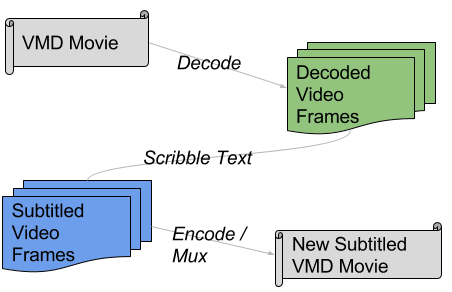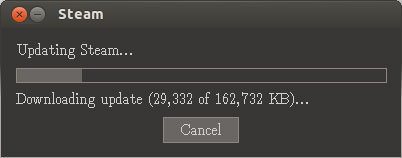This is part 2 of the adventure started in my Subtitling Sierra VMD Files post. After I completed the VMD subtitling, The Translator discovered a wealth of animation files in a format called RBT (this apparently stands for “Robot” but I think “Ribbit” format could be more fun). What are we going to do? We had come so far by solving the VMD subtitling problem for Phantasmagoria. It would be a shame if the effort ground to a halt due to this.
Fortunately, the folks behind the ScummVM project already figured out enough of the format to be able to decode the RBT files in Phantasmagoria.
In the end, I was successful in creating a completely standalone tool that can take a Robot file and a subtitle file and create a new Robot file with subtitles. The source code is here (subtitle-rbt.c). Here’s what the final result looks like:

“What’s in the refrigerator?” I should note at this juncture that I am not sure if this particular Robot file even has sound or dialogue since I was conducting these experiments on a computer with non-working audio.
The RBT Format
I have created a new MultimediaWiki page describing the Robot Animation format based on the ScummVM source code. I have not worked with a format quite like this before. These are paletted animations which consist of a sequence of independent frames that are designed to be overlaid on top of static background. Because of these characteristics, each frame encodes its own unique dimensions and origin coordinate within the frame. While the Phantasmagoria VMD files are usually 288×144 (which are usually double-sized for the benefit of a 640×400 Super VGA canvas), these frames are meant to be plotted on a game field that was roughly 576×288 (288×144 doublesized).
Continue reading


